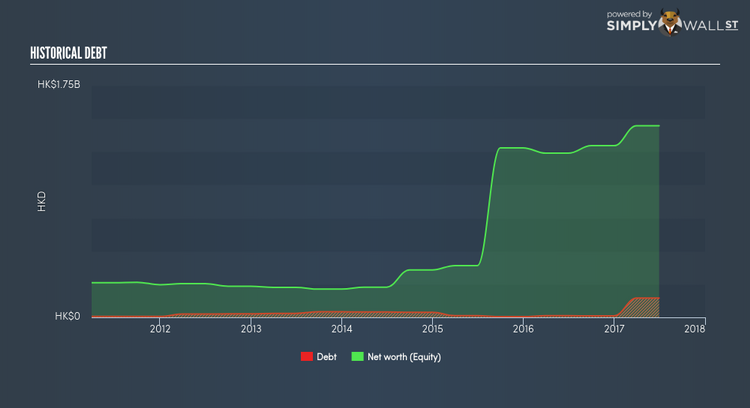What You Must Know About Grand Field Group Holdings Limited’s (HKG:115) Financial Strength

Grand Field Group Holdings Limited (SEHK:115) is a small-cap stock with a market capitalization of HK$302.29M. While investors primarily focus on the growth potential and competitive landscape of the small-cap companies, they end up ignoring a key aspect, which could be the biggest threat to its existence: its financial health. Why is it important? So, understanding the company’s financial health becomes vital, since poor capital management may bring about bankruptcies, which occur at a higher rate for small-caps. Here are few basic financial health checks you should consider before taking the plunge. However, this commentary is still very high-level, so I’d encourage you to dig deeper yourself into 115 here.
How does 115’s operating cash flow stack up against its debt?
115 has built up its total debt levels in the last twelve months, from HK$5.7M to HK$11.5M , which comprises of short- and long-term debt. With this increase in debt, the current cash and short-term investment levels stands at HK$13.4M for investing into the business. Additionally, 115 has generated cash from operations of HK$7.5M during the same period of time, resulting in an operating cash to total debt ratio of 64.69%, meaning that 115’s operating cash is sufficient to cover its debt. This ratio can also be interpreted as a measure of efficiency as an alternative to return on assets. In 115’s case, it is able to generate 0.65x cash from its debt capital.
Does 115’s liquid assets cover its short-term commitments?
Looking at 115’s most recent HK$67.4M liabilities, it seems that the business has maintained a safe level of current assets to meet its obligations, with the current ratio last standing at 2.59x. Usually, for Real Estate companies, this is a suitable ratio since there is a bit of a cash buffer without leaving too much capital in a low-return environment.

Does 115 face the risk of succumbing to its debt-load?
115’s level of debt is appropriate relative to its total equity, at 10.03%. 115 is not taking on too much debt commitment, which can be restrictive and risky for equity-holders.
Next Steps:
115’s high cash coverage and low debt levels indicate its ability to utilise its borrowings efficiently in order to generate ample cash flow. In addition to this, the company will be able to pay all of its upcoming liabilities from its current short-term assets. I admit this is a fairly basic analysis for 115’s financial health. Other important fundamentals need to be considered alongside. I recommend you continue to research Grand Field Group Holdings to get a more holistic view of the stock by looking at:
1. Valuation: What is 115 worth today? Is the stock undervalued, even when its growth outlook is factored into its intrinsic value? The intrinsic value infographic in our free research report helps visualize whether 115 is currently mispriced by the market.
2. Historical Performance: What has 115’s returns been like over the past? Go into more detail in the past track record analysis and take a look at the free visual representations of our analysis for more clarity.
3. Other High-Performing Stocks: Are there other stocks that provide better prospects with proven track records? Explore our free list of these great stocks here.
To help readers see pass the short term volatility of the financial market, we aim to bring you a long-term focused research analysis purely driven by fundamental data. Note that our analysis does not factor in the latest price sensitive company announcements.
The author is an independent contributor and at the time of publication had no position in the stocks mentioned.
